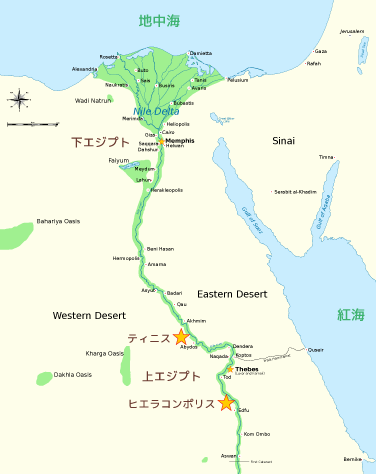「メヒト」の版間の差分
| 12行: | 12行: | ||
この女神の役割は、完全に明かにされているわけではないが、聖なる場所に関連した守護女神であると考えられている。 | この女神の役割は、完全に明かにされているわけではないが、聖なる場所に関連した守護女神であると考えられている。 | ||
| + | |||
| + | == 2014/2/19 == | ||
| + | メヒトはティニスで信仰されていた狩猟の神アンフルの妻である。 | ||
| + | |||
| + | Mehit was the consort of Anhur, a hunter god who was worshipped in Thinis. Various texts allude to a myth in which Anhur tracks down Mehit in Nubia and brings her to Egypt as his wife. This event is the basis for Anhur's name, which means "bringer-back of the distant one". Late sources identify this story with the "Distant Goddess" myth, in which the Eye of Ra—a solar deity who can take the form of several goddesses—runs away from her father Ra, who sends one of the gods to retrieve her. In the version with Anhur and Mehit, Anhur is syncretized with Shu and Mehit with Hathor-Tefnut, Shu's mythological sister and wife. Because Shu and Tefnut sometimes represented the sun and moon, Mehit could also represent the full moon. Her return to her proper place could thus represent the restoration of the Eye of Horus, a symbol of the moon and of the divine order of the cosmos.[4] | ||
| + | |||
| + | Geraldine Pinch suggests that the Distant Goddess may have originally been a personification of the wild deserts of Nubia, whose myth was absorbed into a complex of myths surrounding the Eye of Ra.[4] Toby Wilkinson says that in Early Dynastic times she may have been a protector goddess, associated with holy places.[1 | ||
== 私的解説 == | == 私的解説 == | ||
2014年2月19日 (水) 14:46時点における版
| 初期王朝時代 | |
| 新王国時代 | |
ドイツ語版wikipedia: Mehit |
メヒト(Mehit or Mehyt) は古代エジプトの女神である。初期王朝時代(紀元前3100年頃 - 2686年頃)には、この女神は背中から突出している3本の曲がった棒を持つ横たわった雌ライオンとして描かれていた。新王国時代(紀元前1570年頃 - 1070年頃)から、メヒトはアテフ冠を被る獅子頭の女性として描かれることとなった。この女神は主にヒエラコンポリスとティニスで信仰されていた。通常初期王朝時代には、女神の姿は上エジプトの葦の神殿の図と共に、多数の印章と象牙製品に描かれている。[1]
この女神の役割は、完全に明かにされているわけではないが、聖なる場所に関連した守護女神であると考えられている。
2014/2/19
メヒトはティニスで信仰されていた狩猟の神アンフルの妻である。
Mehit was the consort of Anhur, a hunter god who was worshipped in Thinis. Various texts allude to a myth in which Anhur tracks down Mehit in Nubia and brings her to Egypt as his wife. This event is the basis for Anhur's name, which means "bringer-back of the distant one". Late sources identify this story with the "Distant Goddess" myth, in which the Eye of Ra—a solar deity who can take the form of several goddesses—runs away from her father Ra, who sends one of the gods to retrieve her. In the version with Anhur and Mehit, Anhur is syncretized with Shu and Mehit with Hathor-Tefnut, Shu's mythological sister and wife. Because Shu and Tefnut sometimes represented the sun and moon, Mehit could also represent the full moon. Her return to her proper place could thus represent the restoration of the Eye of Horus, a symbol of the moon and of the divine order of the cosmos.[4]
Geraldine Pinch suggests that the Distant Goddess may have originally been a personification of the wild deserts of Nubia, whose myth was absorbed into a complex of myths surrounding the Eye of Ra.[4] Toby Wilkinson says that in Early Dynastic times she may have been a protector goddess, associated with holy places.[1
私的解説
獅子頭で示されることがあること、ヒエログリフで名前の「Me」の部分が蛇で描かれていること、「アアルの野」を象徴する葦と共に描かれることから、本来は冥界と現世の境界を守る女神であったことが窺える。現世において、アアルの野に通じる「葦の神殿」を守る時は獅子として現され、異界におけるその本体は蛇であったことが示唆されるのではないだろうか。
葦と蛇女神といえば、下エジプトの守護神ウアジェトが有名である。おそらく、メヒトの本来の性質はウアジェトと類似したものではなかったかと考える。
関連項目
獅子頭の女神
葦の原野
その他
参照
- 元の位置に戻る ↑ 個人的注釈:「葦の神殿」というものが具体的にどのようなもので、どのような図なのかを調べたが自力では見つけられなかった。古代エジプトにおいて、「葦の原野(アアル)」とは「天国」の概念に近い来世(いわゆる「楽園」)であり、永遠の場所である。また、古代エジプトの人々は小枝や葦で編んで造った住居を使用していたようであるので、「葦の神殿」とは「永遠性」とか「安楽性」を示す聖なる場所であり、アアルと霊的に繋がり得る場所として考えられていたのではないだろうかと思う。
参考サイト:エジプト建築


